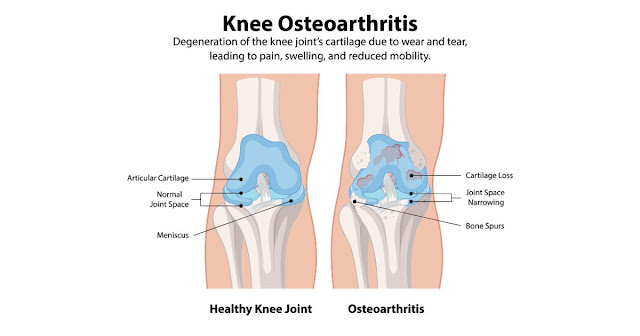Brain Aneurysm: Causes, Symptoms, Risk Factors, and Treatment Options
A brain aneurysm, also known as an intracranial or cerebral aneurysm, occurs when a weak spot in the wall of a blood vessel in the brain bulges and fills with blood. It resembles a small, berry-shaped sac hanging from the artery. When a brain aneurysm ruptures or leaks, it can cause a life-threatening condition known as a hemorrhagic stroke, which requires immediate medical attention.
Causes of Brain Aneurysm
Brain
aneurysms often develop in the arteries located at the base of the brain,
especially at branching points where arterial walls are weakest. These weak
areas are more susceptible to rupture.
Signs and Symptoms of a Brain Aneurysm
Common signs
and symptoms include:
- Severe
headache
- Nausea
and vomiting
- Stiff
neck
- Double
or blurred vision
- Sensitivity
to light
- Seizures
- Drooping
eyelids
- Loss of
consciousness
- Confusion
A leaking
aneurysm may cause a sudden, severe headache, while an unruptured aneurysm can
cause localized pain, double vision, and facial numbness.
Risk Factors for Brain Aneurysm
Certain
factors can increase the likelihood of developing a brain aneurysm, including:
- Age
(more common in adults)
- Gender
(women are more susceptible)
- Smoking
- High
blood pressure (hypertension)
- Drug
use (e.g., cocaine)
- Excessive
alcohol consumption
- Genetic
conditions like Ehlers-Danlos syndrome
- Polycystic
kidney disease
- Congenital
conditions, such as brain AVM (arteriovenous malformation)
- Family
history of aneurysms
Complications from a Brain Aneurysm
When a brain
aneurysm ruptures, it causes bleeding that can damage or destroy surrounding
brain cells, increasing pressure inside the skull. This disruption of blood and
oxygen flow can result in unconsciousness or even death. Other complications
may include:
- Rebleeding
- Vasospasm
(narrowing of blood vessels)
- Hydrocephalus
(fluid buildup in the brain)
- Hyponatremia
(low sodium levels)
Diagnosis of Brain Aneurysm
At Yashoda Hospital and Research Centre, Ghaziabad, various diagnostic tools are used to
detect brain aneurysms, especially in patients with a family history of the
condition. These may include:
- CT Scan: Produces
3D images of the brain.
- MRI: Uses radio waves and
magnetic fields to capture brain images.
- Cerebrospinal
Fluid Test:
Checks for blood in the fluid surrounding the brain and spine.
- Cerebral
Angiogram:
Detects aneurysms by imaging the brain's blood vessels.
Treatment for Brain Aneurysm
Treatment
options depend on factors like the size, location, and whether the aneurysm has
ruptured. Urgent treatment is required for ruptured aneurysms, with several
surgical options available:
- Surgical
Clipping: A metal clip is applied at the base of the
aneurysm to halt blood flow.
- Endovascular
Coiling: A
catheter is inserted into the artery, and tiny platinum coils are placed
inside the aneurysm to block blood flow.
- Flow
Diverter Surgery: A stent is placed in the artery to redirect blood flow away
from the aneurysm.
Symptom Management and Preventive Care
To manage
symptoms and prevent complications, doctors may recommend:
- Pain
relief medications (e.g., acetaminophen) for headaches
- Calcium
channel blockers to prevent blood vessel narrowing
- Anti-seizure
medications for
seizures
- Drainage
procedures
(ventricular or lumbar catheters) to reduce pressure on the brain
- Shunt
surgery for
fluid drainage
- Rehabilitative
therapy to
help regain lost skills due to brain damage
By recognizing the signs and symptoms early, and understanding the risk factors, timely intervention can prevent life-threatening complications from a brain aneurysm.
Conclusion:
Early
diagnosis is key to effectively treating a brain aneurysm. Being vigilant and
recognizing the warning signs can make a significant difference. Immediate
medical attention and timely intervention for a ruptured aneurysm greatly
improve survival rates and recovery outcomes. While recovery from an unruptured
aneurysm is typically fast, a ruptured aneurysm may require multiple surgeries,
and the recovery period can vary based on the extent of damage. Prompt action
is crucial for better long-term prognosis.
Dr. (Brig.) Yadvendra Singh Sirohi is a highly
distinguished neurologist with over 24 years of experience, having trained and
excelled at leading national institutions. Known for his clinical expertise,
compassion, and commitment, he serves as a Senior Consultant in Neurology at Yashoda Hospital &
Research Centre, Ghaziabad. Dr. Sirohi is adept at managing a wide range of
neurological conditions with exceptional skill and care.
Dr. Shishir Kumar is a highly skilled
neurosurgeon, neuro interventionist, and endoscopic spine surgeon with over 9
years of experience in the Delhi/NCR region. He has completed fellowships in
neuro intervention, endovascular surgery, and minimally invasive spine surgery.
With his extensive training, Dr. Kumar provides comprehensive neurosurgical
care, focusing on patient education and a collaborative treatment approach. He
currently practices at Yashoda Hospital & Research Centre, Nehru Nagar, Ghaziabad.
Dr. Atul Gupta is a highly experienced
neurosurgeon with 29 years of expertise. He specializes in complex procedures,
including brain tumor surgeries, cerebrovascular surgeries, epilepsy
treatments, and spine surgeries.
Dr. Puneet Malik is a best neurosurgeon doctor in ghaziabad in complex brain and spinal cord surgeries, and nerve specialist particularly for patients experiencing severe numbness. He is adept at
procedures such as clot removal, tumor excision, and halting brain bleeding,
all performed with exceptional precision and care.



Comments
Post a Comment